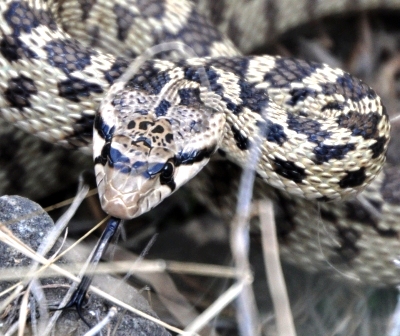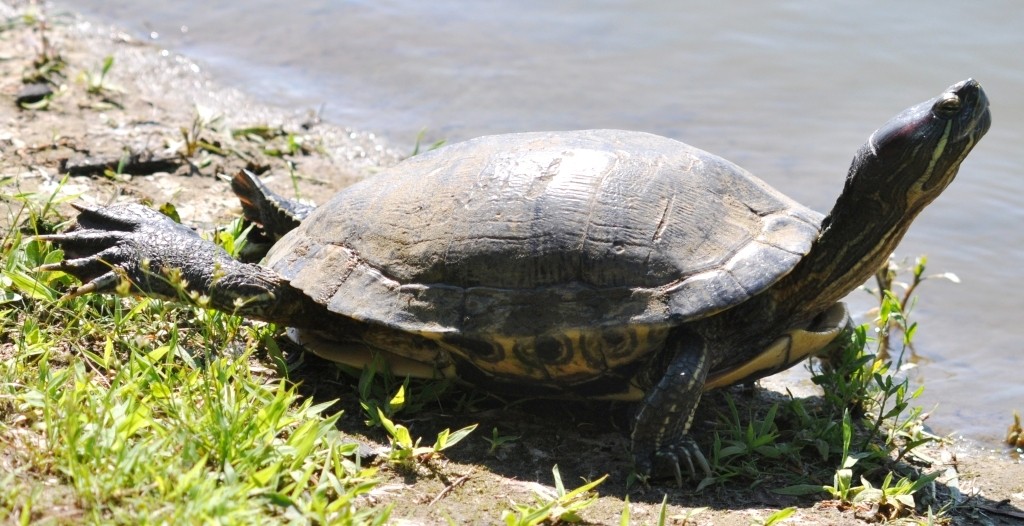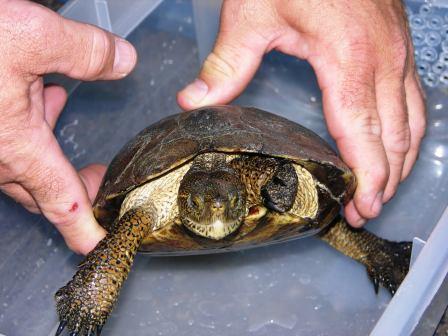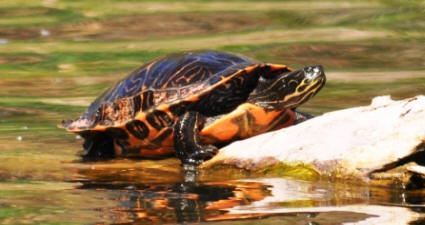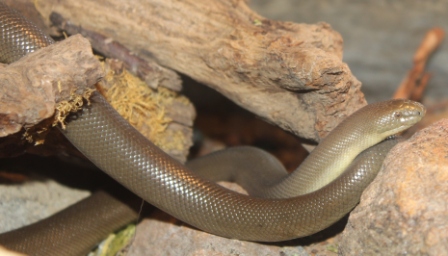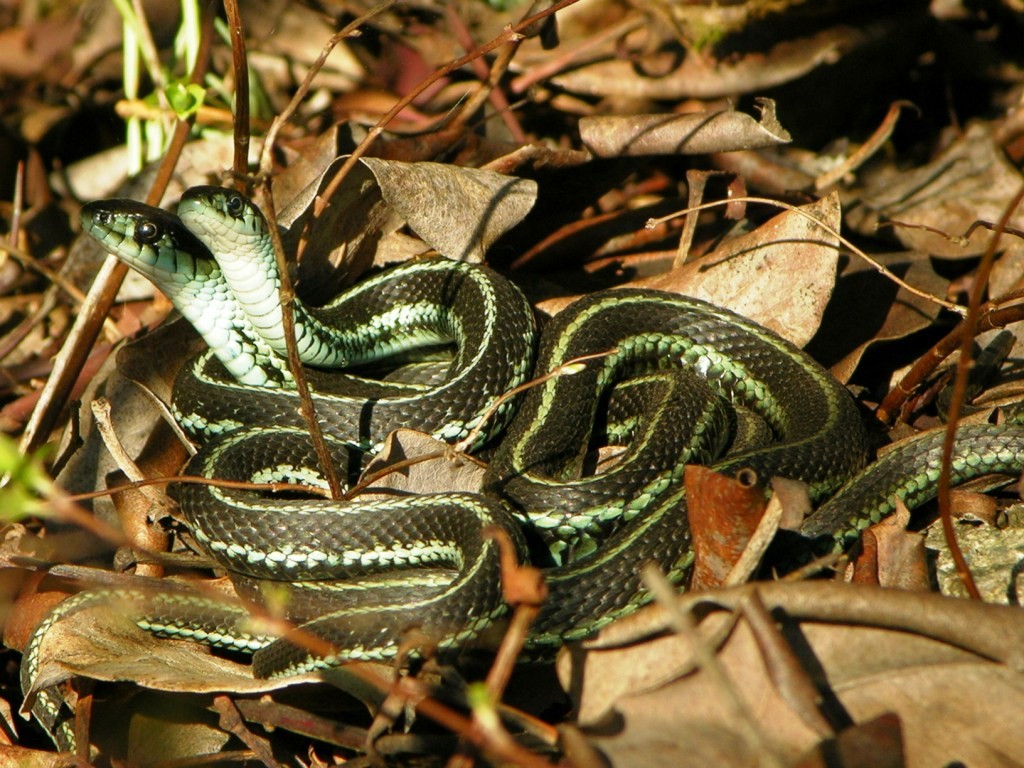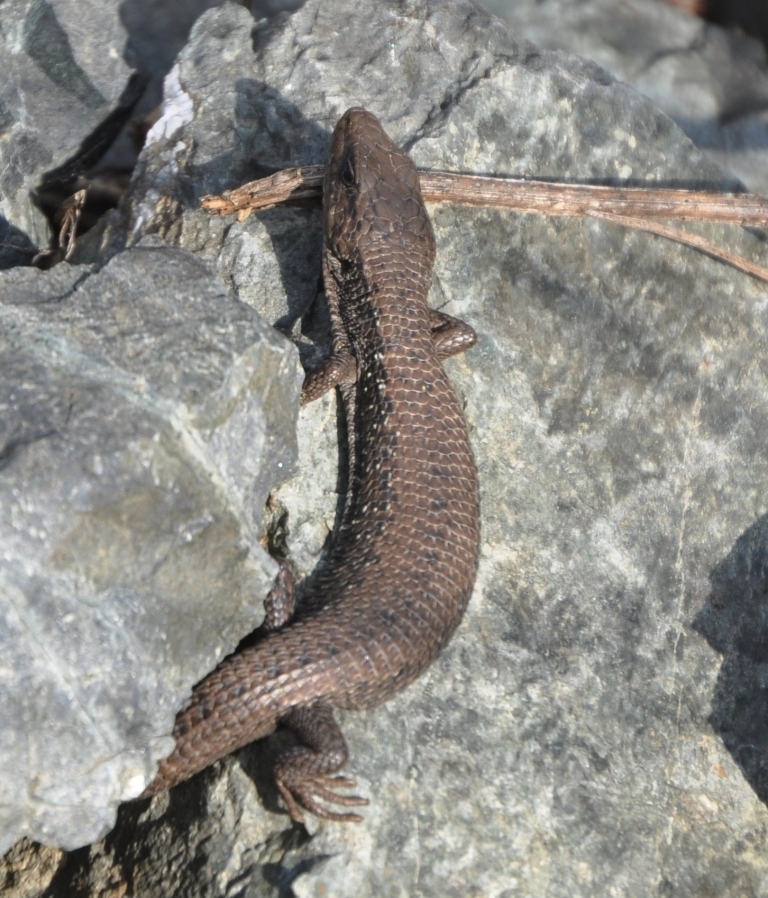Phylum Chordata, Class Reptilia
Primary reference: “Western Reptiles and Amphibians,” Robert C. Stebbins, 3rd Edition
Order Testudines – Turtles:
Family Emydidae – Water and Box Turtles:
- Painted Turtle (Chrysemys picto)
- Pond Slider (Trachemys scripta)
- Western Pond Turtle (Clemmys marmorata)
Family Dermochelyidae – Leatherback Sea Turtles:
- Leatherback Turtle (Dermochelys coriacea)
- Family Cheloniidae – True Sea Turtles:
- Green Turtle – Chelonia mydas
Order Squamata – Snakes and Lizards
Sub order Lacertilia – Lizards
- Anguidae Family – Alligator lizards:
- Northern Alligator Lizard (Gerrhonotus coeruleus)
- Southern Alligator Lizard (Gerrhonotus multicarinatus)
Iguanid Family – Desert and Arid region lizards:
- Desert Collared Lizard (Crotaphytus insularis)
- Leopard Lizard (Gambelia wislizenii)
- Short Horned Lizard (Phrynosoma douglassi)
- Desert Horned Lizard (Phrynosoma platyrhinos)
- Round-tailed Lizard (Phrynosoma modestum)
- Sagebrush Lizard (Sceloporus graciosus)
- Desert Spiny Lizard (Sceloporus magister)
- Western Fence Lizard (Sceloporus occidentalis)
- Side blotched Lizard (Uta stanburi
- Scincidae Family – Skinks:
- Western Skink (Eumeces skiltonianus)
- Teiidae Family – Tegus, Runners, and Whiptails
- Western Whiptail Lizard (Cnemidophorus tigris)
Sub order Serpentes – Snakes
Boidae Family – Boa Constrictors:
- Rubber Boa – Charina bottae
Viperidae Family
Crotalinae Subfamily:
- Western Rattlesnake – Crotalus viridus
Colubrid Family – Colubridae Subfamily:
- Racer Snake – Coluber constrictor
- Sharp-tailed – Snake Contia tenius
- Ring-necked Snake – Diadophis punctatus
- Night Snake – Hysiglena torquata
- Common Kingsnake – Lampropelitis getulus
- California Mountain Kingsnake – Lampropelitus zonata
- Striped Whipsnake – Mastiophus taeniatus
- Pine Gopher Snake – Pituophus melanoleucus
- Ground Snake – Sonora semiannulata
Natracine Family – Natricinae Subfamily:
- Western Aquatic Garter Snake – Thamnophis couchi
- Western Terrestrial Garter Snake – Thamnophis elegans
- Northwestern Garter Snake – Thamnophis ordinoides
- Common Garter Snake – Thamnophis sirtalis
- Mountain Garter Snake – Thamnophis elegans elegans
Everyone has a tale to tell about a reptilian encounter. Numbering about 6,000 species worldwide perhaps no other group of animals provokes such simultaneous wonder and repugnance. The unexpected appearance of even the smallest snake can transform the most sedentary adult into a “feet don’t fail me now” child. Something from the distant past of human species? Something biblical? Your theory is as good as any.
For many wildlife enthusiasts, however, reptiles provided the initial spark that led to a lifelong love of natural history. I vividly recall my introduction to the reptilian order, a day that literally shaped my life.
According to the fossil record the first reptiles were revolutionaries. They declared independence from the water through a combination of scales that prevented internal water loss from the adult, and an egg shell that protected the young on land. The egg design was the key to their success. The shell had to be tough enough to provide a waterproof shield from the environment yet porous enough to permit the interchange of gas as the little one developed. Inside the egg a membrane called the amnion enclosed the little reptile in an environmentally consistent, liquid bath. Attached to a substantial, nourishment filled yolk the infant developed in relative safety. With this start the reptiles spread around the globe.
Five major groups of reptiles populate our world: Order Crocodylia – the crocodiles and alligators; Order Testudines – the turtles; sub order Lacertilia – the lizards; and sub order Serpentes – the snakes. Group number five is the lonely and ancient Tuatara of New Zealand, the last living representative of the order Rynchocephalia.
Although we cannot boast of any alligators or crocodiles, we do have in the Northwest a wonderful and unexpected variety of reptilian wildlife. Renowned for its wet forests and constant rains, the Northwest boasts just 2 inland species of water loving turtles. Arid regions fare even worse with the lone desert tortoise representing the order Testudines. But the cold ocean holds an occasional surprise – 3 species of sea turtles, to include the one ton Giant Leatherback, largest turtle in the world.
For all of our rain, though, our water loving reptiles are outnumbered by reptiles that prefer dry land. Northwest wildlife includes 13 different species of lizards and no less than 15 species of snakes. The seeming contradiction is easy to explain. The region’s cool, rainy geography, is mainly confined to the relatively narrow, western coastal region. To the east of the Cascade Mountains lies an enormous, dry, and sparsely populated land. Most of Oregon, Washington, and Idaho consist of arid, even desert like conditions, a climate very attractive to snakes and lizards.
Fascinating to observe and low maintenance as pets, reptiles are a great way to inculcate a lifetime love of nature.
<
>

